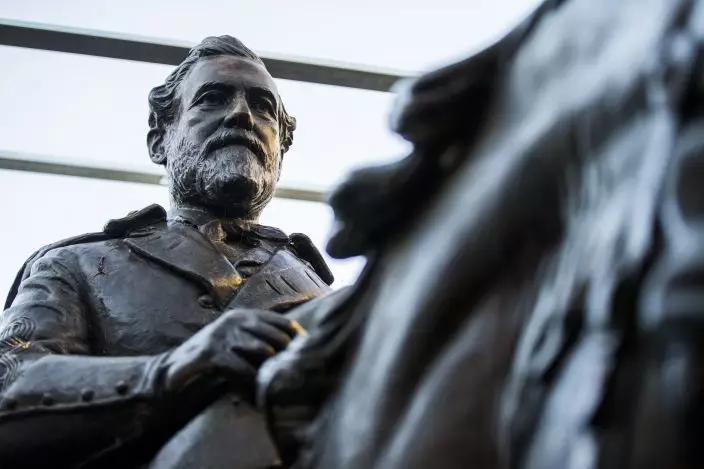Dallas leaders have decided to sell a statute of Confederate Gen. Robert E. Lee that was removed from public view nearly two years ago.
The Dallas City Council on Wednesday designated the 1935 sculpture by Alexander Phimister Proctor as surplus property to be sold to the highest bidder.
City leaders say the buyer must pay at least $450,000. That's what it cost to move the bronze sculpture from a park in September 2017 and put it into storage.

FILE--In this Dec. 20, 2018, file photo the 1935 statue of Robert E. Lee, by sculptor Alexander Phimister, sits in storage at Hensley Field, the former Naval Air Station on the west side of Mountain Creek Lake in Dallas. Dallas City Council Wednesday, May 22, 2019 declared the statue surplus property and offered to sell it for a minimum $450,000, what it cost to move the bronze artwork from public view. The statue was removed from a park in September 2017 and put in storage and has been appraised at $950,000, which Dallas authorities say could pay for removal of the city's Confederate War Memorial.(Ashley LandisThe Dallas Morning News via AP, File)
The statue was appraised at $950,000. Dallas authorities say that much money could pay for the planned removal of a Confederate War Memorial.
Dallas was among cities nationwide that removed Confederate statues following a deadly white nationalist protest in Charlottesville, Virginia, in 2017. Civil rights advocates say such statues are monuments to racism.


